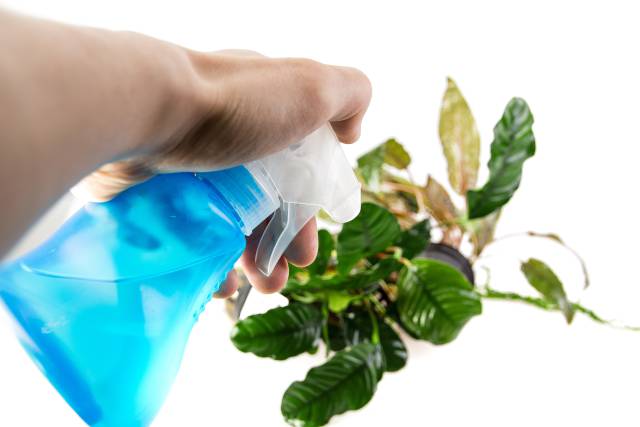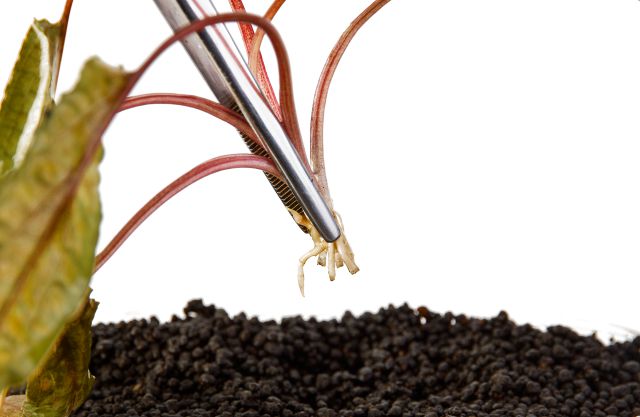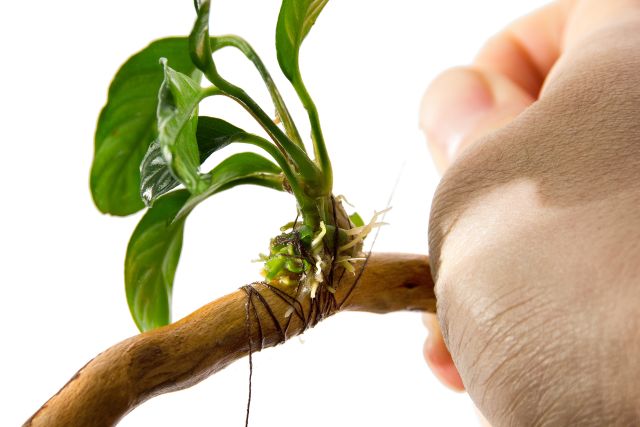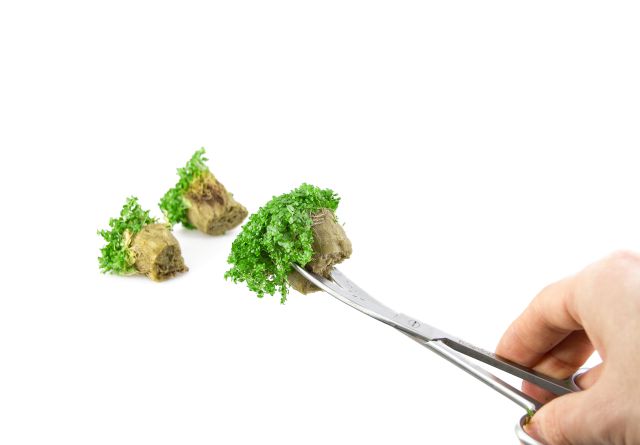Various types of plants can be used in an aquarium. Aside from the usual stem plants for the background there are ground covering types, but also epiphytes or rosette plants. Oliver Knott shows in this video how to optimally prepare aquatic plants and which methods are appropriate to plant them.
How to dry plant an aquarium
Of course you can add aquatic plants to an already established aquarium, dry planting the tank has its benefits, though. First, by handling the plants outside the tank, the immediate surroundings of the aquarium won’t get wet, you won’t have to constantly fight against the buoyancy of the plants and you also won’t stir up the substrate. Oliver demonstrates in the video how to properly dry plant an aquarium. Whereas the term "dry" might be a bit misleading here, because substrate and plants should of course still be moistened from time to time using a spray bottle.

This prevents the plants from drying up too much, especially if the set-up is taking several hours. A well-moistened substrate (especially soil) is in itself more sturdy and better keeps ascends together. If the humidity is sufficient, less ground soil particles will cling to the tweezers after planting.
Planting

For inserting aquatic plants, a suitable pair of tweezers is enormously helpful (Oliver Knott is using the Aqua Rebell Tweezers 30 cm straight). For hard-to-reach spots, curved tweezers such as the Aqua Rebell Tweezers 30 cm curved as seen in the video is a great aquascaping tool. Oliver gives the important tip here, to insert the aquarium plants deep into the ground, so that they do not float up when filling the tank later. To straighten the roots, just pull up the plant a bit afterwards.
How to handle various aquatic plants
At first, Oliver Knott plants some cryptocorynes (water trumpets). They often have very long roots, which should be shorted using a suitable pair of scissors. You can either plant the crypts as a whole or part them into several smaller portions first. For ground covering purposes the latter is more efficient.
With stem plants, the leaves at the bottom of the stem should be removed first. Damaged or crushed ends are freshly cut off before insertion, to make sure that only healthy parts of the plants are used. Using tweezers it is easy to insert singular stems, but also multiple ones at once for a more bushy look. For this purpose, tweezers with a wider tip are even better suited.
Epiphytes such as ferns, Bucephalandra and Anubias should not be inserted into the soil substrate like common aquarium plants, because their rhizomes might rot when covered. It is better to fix epiphytes by tying them up, glueing or tucking them on and into the hardscape - in other words on and between driftwood and stones.

Ground covering plants should be divided into smaller portions before planting. Placing the plants a few centimeters apart will directly cover a larger area. Also, the plants will take root much better with a little space around them. Oliver has a good tip for those who see the planting of those delicate foreground plants as a burden and are easily annoyed by the stubborn buoyancy: if you’ve decided to purchase potted ware, you just keep a part of the surrounding rockwool on the plant’s roots, acting as an anchor to the plant portion, keeping it at the bottom with its weight.

By the way: even more tips for the insertion of aquatic plants can be found here.